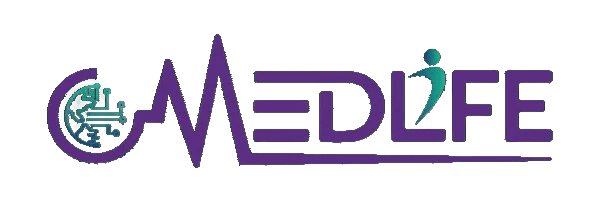Wound care billing remains one of healthcare’s most complex reimbursement areas in 2025. With evolving regulations and stringent documentation requirements, understanding current guidelines is essential for maximizing legitimate reimbursement while maintaining compliance.
Understanding Wound Types and Their Billing Implications
The Centers for Medicare and Medicaid Services (CMS) categorizes wounds into four primary types:
- Acute Wounds: Sudden injuries like cuts or burns with predictable healing trajectories
- Chronic Wounds: Slow-healing wounds like pressure ulcers requiring extensive documentation
- Open Wounds: Exposed tissues requiring specific specialized coding
- Closed Wounds: Injuries beneath intact skin with distinct billing approaches
Correctly identifying the wound type establishes the foundation for appropriate code selection and documentation requirements, directly impacting reimbursement amounts.
2025 Updates to CMS Wound Care Billing Guidelines
CMS wound care billing guidelines have evolved in 2025, with new documentation requirements including more detailed wound measurements and photographic documentation for chronic wounds. Medical necessity criteria now require enhanced evidence of improvement and specific timeframes for healing milestones. Several new essential CPT codes have been introduced for advanced technologies, while existing codes have modified descriptors to better capture treatment complexity.
Want to Improve Your Wound Care Billing Process?
Get a free consultation to enhance billing accuracy and accelerate cash flow
TALK TO AN EXPERTEssential CPT Codes for Wound Care Billing in 2025
Understanding the appropriate CPT codes is fundamental to accurate wound care billing:
Active Wound Care Management
| CPT Code | Description | 2025 Updates |
| 97597 | Debridement of open wound, first 20 sq cm or less | Documentation must specify tissue types removed |
| 97598 | Each additional 20 sq cm of debridement | New sequencing rules for multiple wounds |
| 97602 | Non-selective debridement | Bundled code, not separately payable |
| 97605/97606 | Negative pressure wound therapy | Updated documentation requirements |
| 97607/97608 | Negative pressure therapy with disposable system | New compatibility guidelines |
| 97610 | Low frequency ultrasound treatment | Restricted when used with other modalities |
Surgical Debridement
| CPT Code | Description | Key 2025 Notes |
| 11042 | Debridement, subcutaneous tissue | Restricted by place of service requirements |
| 11043 | Debridement, muscle and/or fascia | Only billable in inpatient, outpatient hospital, or ASC |
| 11044 | Debridement, bone | Only billable in inpatient, outpatient hospital, or ASC |
| 11045-11047 | Each additional 20 sq cm | Specific depth documentation crucial |
Remember: Code selection must reflect the deepest tissue actually removed during the procedure, not the wound’s overall depth.

Documentation Requirements for Medicare Wound Care Billing
Medicare has intensified its scrutiny of wound care claims in 2025. Essential documentation elements include:
- Wound Assessment: Complete measurements (length, width, depth) and wound bed description
- Treatment Rationale: Clear medical necessity justification for the selected intervention
- Provider Qualifications: Documentation that the treatment was performed by qualified personnel
- Expected Outcomes: Specific, measurable goals for the wound healing process
- Healing Progress: Comparative measurements showing improvement
A complete wound care record should document the location, measurements, wound bed characteristics, exudate, periwound skin condition, pain level, treatment performed, medical necessity, progress toward goals, and plan for future care.
Common Billing Errors and How to Avoid Them
The most frequent wound care billing errors include selecting codes based on wound depth rather than tissue actually debrided, incorrectly calculating wound surface area, and separately billing for bundled services.
To prevent these errors, code selection should always reflect the deepest level of tissue removed, not the wound’s overall depth. Consider implementing standardized measurement protocols and digital wound measurement tools. Regularly review bundling rules and use outpatient wound care billing cheat sheets to identify bundled services.
Modifiers Critical for Wound Care Billing Success
Appropriate modifier usage can make the difference between claim approval and denial:
- Location modifiers: LT/RT (left/right), E1-E4 (eyelids), FA-F9 (fingers), TA-T9 (toes)
- Multiple procedure modifiers: 59 (distinct service), XS (separate structure), XE (separate encounter)
- Coverage modifiers: KX (medical policy requirements met), GA (ABN on file)
Proper modifier usage should be part of any comprehensive wound care billing strategy and included in wound care billing cheat sheets.
Place of Service Considerations
Billing rules vary significantly based on where wound care is provided. Hospital-based outpatient wound care departments are subject to OPPS rules with specific revenue codes and packaging requirements. Physician office-based wound care follows different payment methodologies with more flexibility in service provision.
For Ambulatory Surgical Centers, only certain wound care procedures are payable, and deeper debridements (CPT codes 11043, 11046, 11044, 11047) are restricted to inpatient hospitals, outpatient hospitals, or ASCs. Understanding these distinctions is crucial for proper billing and avoiding denials.
Wound Care Billing Software Solutions
Modern wound care billing software offers significant advantages:
- Digital measurement tools with automated calculations
- Code validation based on documented procedures
- Medical necessity verification
- Compliance monitoring and alerts
- Integration with EHR systems
Investing in quality wound care billing software can reduce administrative burden while improving reimbursement rates and compliance. This is just as essential as knowing how to Bill for MRI, CT, Ultrasound, where accuracy and streamlined processes play a critical role.
Creating a Comprehensive Compliance Program
A robust wound care billing compliance program should include regular internal audits, ongoing staff education, designated compliance leadership, and established protocols for addressing identified issues. Such a program not only reduces the risk of audits but also improves overall billing efficiency.
This article is for informational purposes only and does not constitute legal or financial advice. Healthcare providers should consult with qualified billing specialists for guidance on specific situations.


